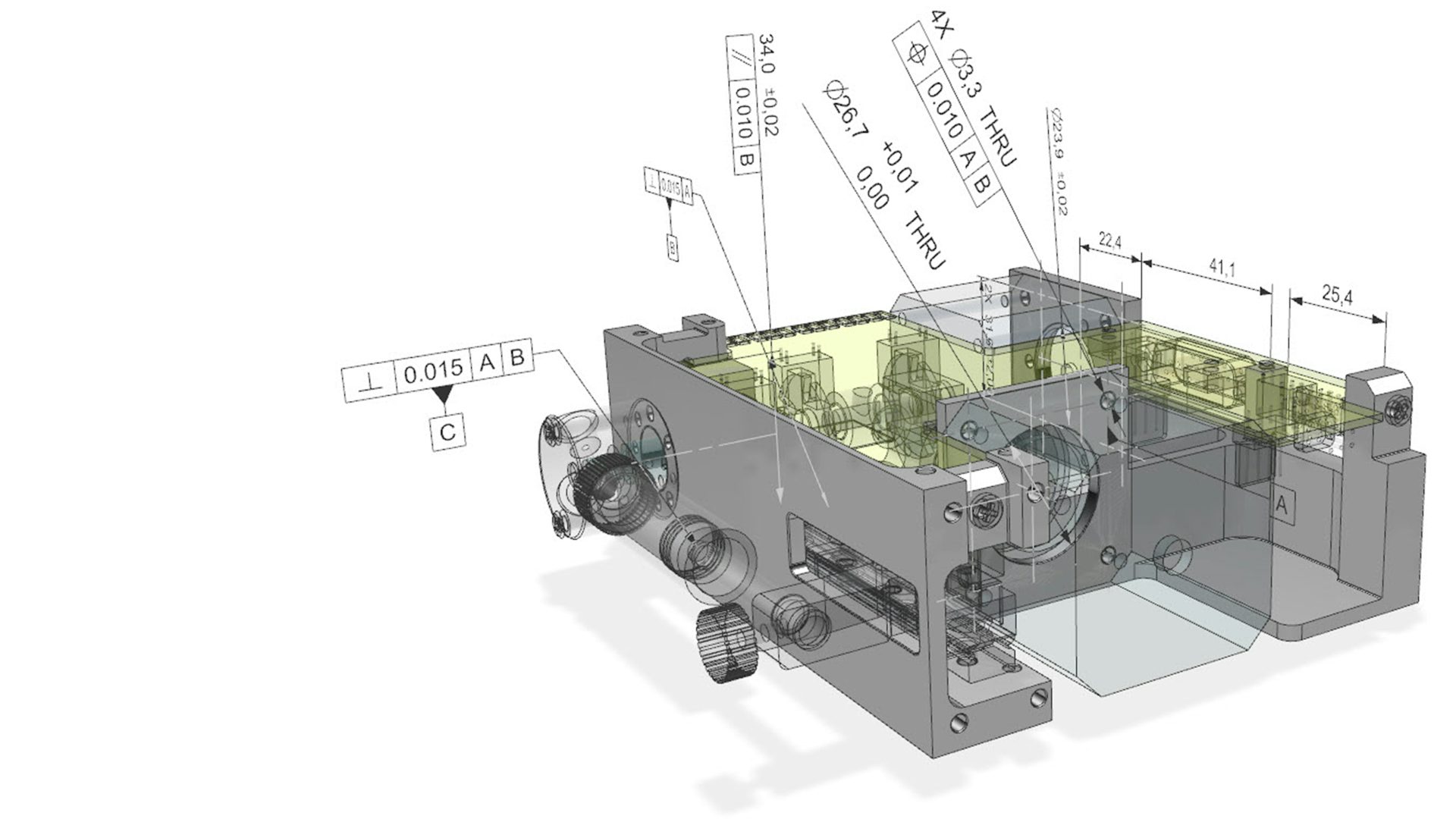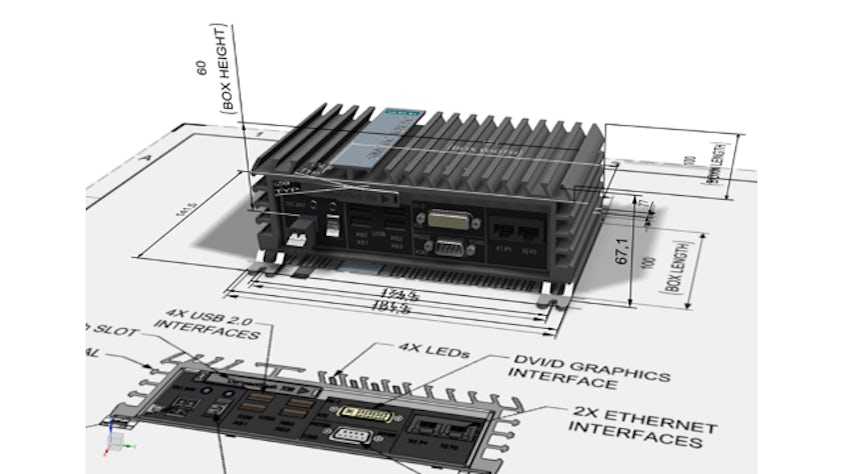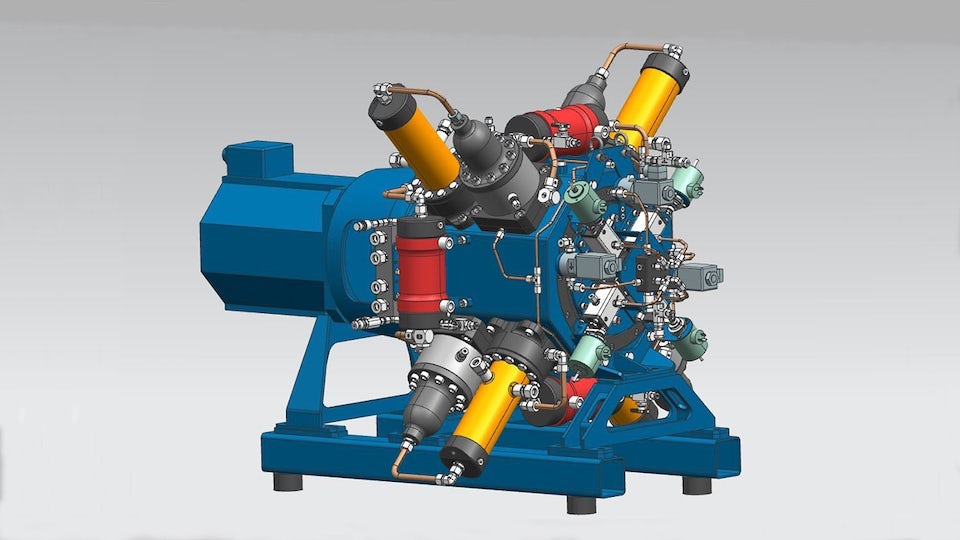Elimina la necessità di disegni 2D, garantendo al contempo che il prodotto finale sia conforme alle relative specifiche ingegneristiche. Con NX, i team di prodotto possono acquisire e condividere i requisiti ingegneristici all'interno del modello 3D, consentendo così il pieno utilizzo dell'intento progettuale.
Le persone hanno familiarità con i disegni 2D e li usano per definire un prodotto finito. I disegni 2D contengono una simbologia standard universalmente compresa e interpretata. Tuttavia, in alcuni casi, l'esistenza di più dati ridondanti necessari per definire una parte prodotta può portare a deviazioni nella forma 3D finale. Gli errori di interpretazione, gli errori di duplicazione o le incongruenze di revisione possono contribuire a errori costosi che si traducono rapidamente in una qualità e una produttività inferiori.
La quotatura e la tolleranza geometrici (GDT) sono una componente essenziale della definizione completa delle parti. Interessa la maggior parte delle aree di realizzazione del prodotto, tra cui la progettazione, la definizione degli strumenti, la produzione e l'ispezione. Applica GDT rispettivamente alle viste delle parti 2D e ai modelli 3D. Utilizza NX CAD per applicare i simboli GDT alle viste di parti 2D e ai modelli 3D.
L'uso di disegni 2D per comunicare i requisiti di produzione a valle aggiunge un onere inutile al ciclo di sviluppo del prodotto. Una semplice modifica alla definizione del prodotto richiede l'aggiornamento dei dati digitali 3D e numerose modifiche ingegneristiche a tutta la documentazione 2D associata al prodotto. Poiché la manutenzione di questa documentazione richiede tempo, il ciclo di vita per l'implementazione di una modifica del prodotto aumenta con l'estensione dei dati 2D associati.





